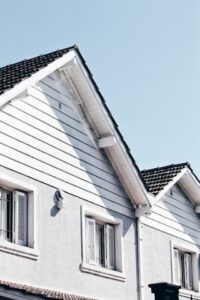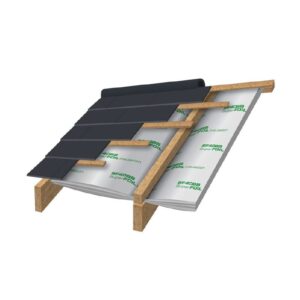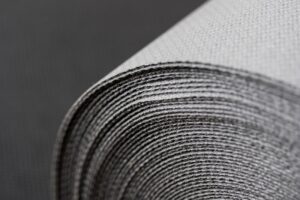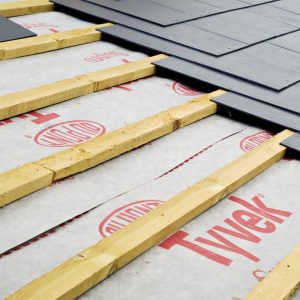Breathable roof membranes help prevent the build-up of harmful condensation in pitched roofing applications, keeping your roof space nice and dry.
What’s more:
If you don’t have a breather membrane, moisture might build up on the insulation, making it ineffective.
And if you’ve decided to install breathable membrane for roof, you want to know how much of it you’re going to need, right?
Right. That’s why at Insulation Superstore, we’ve prepared a guide to help you measure up for your next breathable membrane project.
Here’s what we have in store for you.
Table of contents:
- How do I calculate my roof area?
- How much breathable membrane do I need?
- How thick is a breathable membrane?
- Final thoughts
How do I calculate my roof area?

The first step towards figuring out how much breathable roofing felt you’re going to need is calculating the area of your roof.
Here’s how you need to go about it:
Start by measuring the length of your roof – essentially, that’s the length of the wall the roof sits on.
Next up, you need the slope height. Keep in mind that this isn’t the same as the height of the roof.
That being said:
Most homeowners should be able to find this measurement in the building plans they got when purchasing the property or by contacting their local council.
Once you have that, simply use this formula:
Roof width (m) x roof slope height (m) = half roof area (m²) x 2 = entire roof area (m²)
But what if you have a complex roof that features multiple sections?
If that’s the case, it’s best to calculate the area of each section individually before adding them all together. And if this sounds like a bit too much work, you might want to call the professionals.
How much breathable membrane do I need?

Now that you know your roof area, and you’ve learnt how a a breathable membrane works, you’re off to a great start!
From here on, the first things you need to consider are the timber rafters or counter battens on the roof. Make sure you add a 10-15mm drape between each batten or rafter.
Next, there’s the membrane overlap over the eaves support tray. But how much should roof membrane overlap?
The exact figure typically depends on your roof pitch.
Here’s the scoop:
If your roof pitch is under 14°, the overlap should be 150mm.
If the pitch is between 15° and 35°, a lap of 100mm should be sufficient.
Finally, with roof pitches over 35°, the lap could be reduced to as little as 75mm.
Keep in mind that different manufacturers have slightly different recommendations. So, make sure you’ve studied the instructions carefully before laying the loft membrane.
Last but not least, don’t forget to factor in any specific roof features, such as roof valleys and verges.
You’ll need to consider the following:
On roof valleys, you’ll have to extend the breathable roofing membrane by around 300mm on each side, starting from the centre.
At abutments, you should turn up the underlay by around 100mm to ensure a secondary waterproof barrier.
On wet roof verges, the membrane will have to lap onto the masonry by around 50mm.
Finally, add the overlap areas and special features to your roof area, and you’ll get the amount of breathable roofing felt you’re going to need. It’s always a good idea to factor in around 10% wastage on top of the total, just to be on the safe side.
Bear in mind that breathable membrane is typically sold in standard lengths of 50m and widths of either 1m or 1.5m, sufficient for areas of 50m² and 75m², respectively.
How thick is a breathable membrane?

The breather membrane thickness doesn’t really play a part in your measurements. However, it’s important when it comes to the overall weight and air permeability, which is why we decided to include a short section on the topic.
Now:
Most membrane options available on the market are around 0.4-0.6mm in thickness. While that may not seem like a lot, the high-quality materials used in the manufacturing process, such as multi-layered polyolefin, ensure outstanding performance.
That being said, slightly thicker membranes of around 2mm can also be obtained. Ultimately, it’s up to you to decide what thickness is optimal for your roof.
Final thoughts

Estimating the amount of breathable membrane for your next roofing project can be a little bit tricky, especially if your roof has complex features.
The good news is:
You shouldn’t be afraid to tackle this task.
Once you’ve calculated your roofing area, you now know exactly what else you need to factor into the equation before you can move on to installing your brand-new breathable roofing membrane.

















